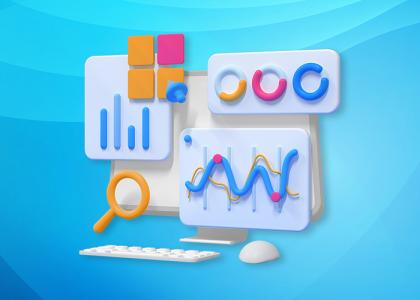The future of career pathways: How tech can revolutionise your business

Embracing career pathways is the key to retaining talent in your business. Hannah Jeacock, research director at MHR, explains why.
In November 2022, the future of work changed. The launch of ChatGPT suddenly thrust the possibilities of artificial intelligence (AI) into the mainstream.
For businesses facing troubling economic waters and as employers continue to find it difficult to recruit and retain employees, it is an opportunity to reassess how AI-enabled technology and software can help them create a workplace full of motivated, skilled and agile talent.
Employers too are cottoning on to the changing patterns of career pathways. By utilising the right software, businesses can support career development, reduce flight risk and, ultimately, retain their top talent to power a thriving, efficient workforce.
Changing paths
HR’s mission for career development is changing. Pathways have traditionally been seen as linear, going from junior to senior through the same role or department. Now, the focus is shifting towards creating non-linear trajectories.
Embraced by global organisations such as Amazon and Walmart, organisations want to diversify employee skillsets across different roles to fill talent gaps. Rather than focusing entirely on recruiting externally into roles, it is increasingly more cost-effective to set out a career pathway for employees that can see them step into new, more senior roles that have a strong business impact.
“There are so many benefits to this,” says Hannah Jeacock, research director at MHR Labs. “There are the general business benefits because you're starting to cross-pollinate people, ideas, and skills and creating networks within companies that might not have happened before. And, of course, it is more efficient and cost-effective because organisations can train current employees at a much lower cost than hiring new ones.
“We’ve spoken to employers who prefer to hire people with good attitudes and high emotional intelligence who are good at relationships, ahead of those who might have the necessary job-specific skills. That is because soft skills are harder to train than hard skills, so they invest in training the hard skills, knowing those soft skills will help the employee move between roles and departments if necessary.”
Non-linear career pathways also benefit employees because they feel more valued within a company. On top of that, they will see more opportunities to develop high-value skills that open up more doors than if they were progressing on a traditional linear path.
Yet, to truly unlock the full potential of career pathways, HR teams need the right data and software to support them.
Tech's helping hand
Investing in software that can deliver the right data is key to understanding the problems in career development and in offering solutions to those problems.
“A really exciting facet of career pathways is being able to build on good data,” says Jeacock. “When you aggregate the data across a whole organisation, you start to find patterns that will reveal a set of unexpected pathways an employee might like to take and how you can support that.”
How does this work in practice? Well, good data can provide a clear picture of several determining factors: how long someone might stay in particular roles; what skills are required to take the next step; what training resources will lead to different, more valuable paths; what was achieved by previous employees taking those paths.
“The more pathways you map, the bigger the picture you build for the next person. You want to progress their careers, they want to look for opportunities, and if you don’t do that, then they’ll look elsewhere for progression.”
It is inevitable that employees will eventually move across to new roles. Building up data around what MHR Labs terms ‘role expectancy’ is critical to improving efficiencies and successfully implementing continuity planning. How long someone remains in a role isn’t an exact science, but it is possible to get a clear picture of the average length. For example, MHR found that, on average, payroll analysts are ready for a new role after 12 months. Applying this level of information across all roles will help the employer and employee plan ahead.
The result? Better relationships, better morale and better retention.
There’s a caveat, though. “It’s crucial to have the right data, and the right software to get the right insights,” says Jeacock. “You can't take advantage of any of this if your data is really messy, or in different systems, or not maintained in a good way.
The human touch
Technology can’t solve everything on its own, though. Software is there to support the HR team, not replace it. HR professionals and line managers can use the insights they take from data to help inform the all-important human-to-human conversations with employees.
It is essential to keep this in mind when assessing flight risk. “Our research shows that flight risks are difficult to predict to a really high degree of accuracy,” says Jeacock. “A person’s decision to leave a company is often very personal, very complex. So you should be cautious about any system that says it can predict your flight risks.”
Despite this, there are insights and warning signs that can indicate flight risks, including the average time spent in a role and the company’s salary compared to the industry benchmark. But the best way to reduce flight risk remains to have regular open conversations with employees and to offer dynamic and interesting career pathways towards better-skilled, better-paid roles.



